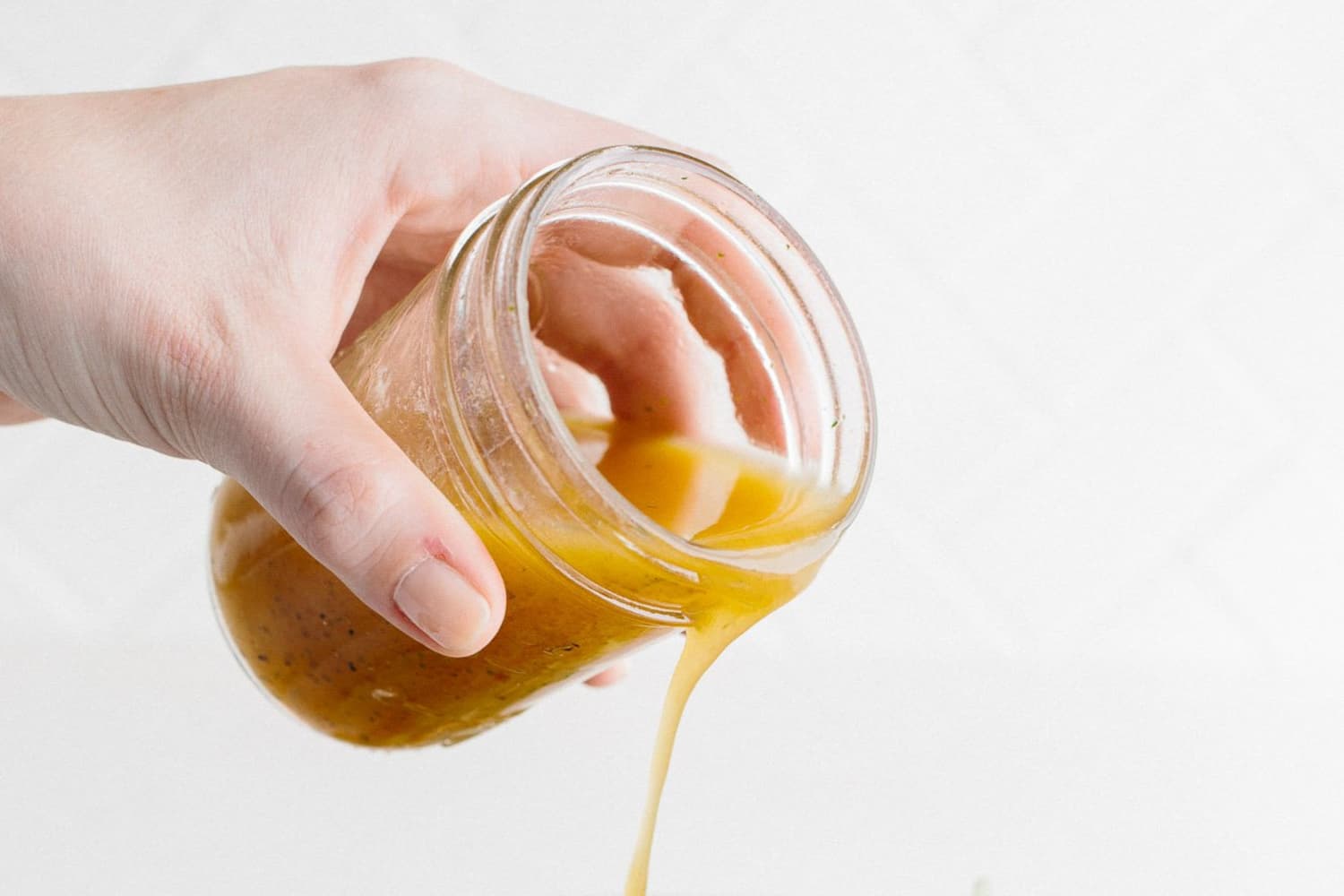For delicious homemade salad dressing, memorize this super simple formula: one part acid to three parts oil.
Makesabout 1 cup
We independently select these products—if you buy from one of our links, we may earn a commission. All prices were accurate at the time of publishing.
The time has come for you to embrace homemade salad dressing — starting with this vinaigrette. You don’t need a recipe, and you don’t even really need measuring spoons — all you need is a basic understanding of how oil and vinegar work together. Here is everything you need to know.
Using this basic formula, there are almost endless variations. For instance, you could use one tablespoon of cider vinegar and three tablespoons of olive oil. Or you could make a big batch of dressing and use 1/4 cup of vinegar mixed with 3/4 cups olive oil. Or use ounces, or milliliters, or the side of a jam jar — this a ratio, so you can use the means of measuring the ingredients that you prefer.
Use a tasty oil to make your vinaigrette — any tasty oil. This can be a fancy extra-virgin olive oil you just picked up at the farmers market, or a mild-flavored one that you really like from Trader Joe’s (we have a list of the olive oils we recommend most). Just about any oil that remains a liquid at room temperature can work. Some examples to inspire you:
Whichever oil you choose, it doesn’t need to be particularly specialized or expensive — it just needs to be an oil with a flavor you like.
If you don’t like very strong, intense flavors with your salad, stick with more neutral-flavored oils like grapeseed or regular olive oil. Or, try combining a small amount of a strongly flavored oil with a milder-flavored oil.
Anything goes for the vinegar or acid, but the same rule applies: Pick something tasty. Here are a few suggestions to get you started:
It can also be fun to experiment with interesting new flavors of vinegar that you come across. Again, as long as you enjoy the flavor, it will likely make a good vinaigrette.
Just avoid plain distilled white vinegar. It has a very strong, harsh flavor that isn’t generally very good in vinaigrettes.
Seasoning Your Vinaigrette
Oil and vinegar are the base of the vinaigrette, but they need a little help if they’re going to really make a salad appetizing. If you’re new to making salad dressings at home, try starting out with just adding some simple salt and pepper. Even with just these two seasonings, you’ll be surprised at how well they will round out the vinaigrette.
From there, you can start amping up your vinaigrette with all sorts of ingredients.
It’s hard to go wrong when making a vinaigrette, and you’ll learn your own tastes and preferences the more you make them.
Mixing Together Your Vinaigrette
Once you’ve settled on the ingredients going into your vinaigrette, it’s time to whisk everything together. Oil and vinegar will naturally separate into two separate layers, but when we’re making a salad, we want them to bind together so they coat a salad evenly and give us a uniform flavor as we’re eating.
Combining oil and vinegar so they bind together to create an almost creamy concoction is called emulsifying, and we can do this in one of three ways:
None of these will create a stable emulsion — one that doesn’t separate back into its component parts (like mayonnaise or hollandaise sauce) — so be sure to use your vinaigrette before it separates back into oil and vinegar. If that happens, simply shake to recombine the vinaigrette before using.
3 Ways to Whisk a Vinaigrette
You can make a vinaigrette by whisking it together in a bowl, shaking it together in a jar, or blending it with a blender. Here’s more information about all three:
Whisk with a fork or whisk
Blend in a blender or with an immersion blender
Tasting and Adjusting Your Vinaigrette
Before you actually use your vinaigrette to dress your salad, be sure to give it a taste. This is your moment to change the ratio of vinegar and oil, add more salt and pepper, or make any other last-minute adjustments.
Since tasting a vinaigrette on its own can give you a skewed idea of its flavor, taste it by dipping the edge of one of the greens into the vinaigrette. This will give you a much better idea of how your vinaigrette will taste with the finished salad.
The Best Way to Store a Vinaigrette
Store vinaigrettes in a jar or other container with a tight lid so that it’s easy to shake it up again when you need it. If you made a basic vinaigrette with just olive oil, vinegar, salt, and pepper, you can stash it on the counter or in the cupboard for several weeks. If any of the ingredients in your vinaigrette were previously refrigerated or are fresh, like lemon juice or minced shallots, then store it in the refrigerator up to five days.

